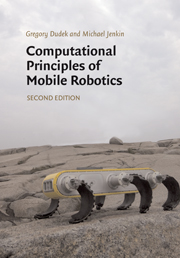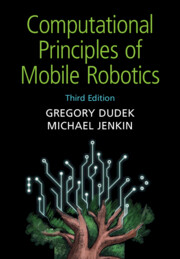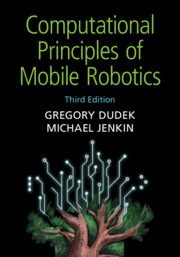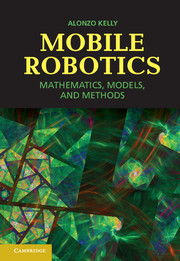Computational Principles of Mobile Robotics
This textbook for advanced undergraduates and graduate students emphasizes algorithms for a range of strategies for locomotion, sensing, and reasoning. It concentrates on wheeled and legged mobile robots but discusses a variety of other propulsion systems. This edition includes advances in robotics and intelligent machines over the ten years prior to publication, including significant coverage of SLAM (simultaneous localization and mapping) and multi-robot systems. It includes additional mathematical background and an extensive list of sample problems. Various mathematical techniques that were assumed in the first edition are now briefly introduced in appendices at the end of the text to make the book more self-contained. Researchers as well as students in the field of mobile robotics will appreciate this comprehensive treatment of state-of-the-art methods and key technologies.
- Describes a methodology for the analysis of data and planning of experiments
- Combines solid, well-known, results in algebra and statistics into a systematic, step-by-step method
- Leads to descriptive, inferential, and broadly qualitative analysis of the experimental results
Reviews & endorsements
'… a good synthesis of robotics for computer science people, and is a useful tool for approaching the area.' Computing Reviews
'… clearly presents the range of topics covered in this multidisciplinary field.' Industrial Robot
'This book is an indispensable tool for any - both pre-university and university - course on mobile robotics. It covers the main topics related to any mobile robotic system, including hardware (locomotion and communication), sensors, navigation, path planning, mapping, and localization.' Ramon Gonzalez Sanchez, University of Almeria
Product details
March 2013Adobe eBook Reader
9781139855495
0 pages
0kg
243 b/w illus. 6 tables 96 exercises
This ISBN is for an eBook version which is distributed on our behalf by a third party.
Table of Contents
- 1. Overview and motivation
- 2. Fundamental problems
- Part I. Locomotion and Perception:
- 3. Mobile robot hardware
- 4. Non-visual sensors and algorithms
- 5. Visual sensors and algorithms
- Part II. Representation and Planning:
- 6. Representing and reasoning about space
- 7. System control
- 8. Pose maintenance and localization
- 9. Mapping and related tasks
- 10. Robot collectives
- 11. Robots in practice
- 12. The future of mobile robotics
- Appendix A. Probability and statistics
- Appendix B. Linear systems, matrices and filtering
- Appendix C. Markov models.








